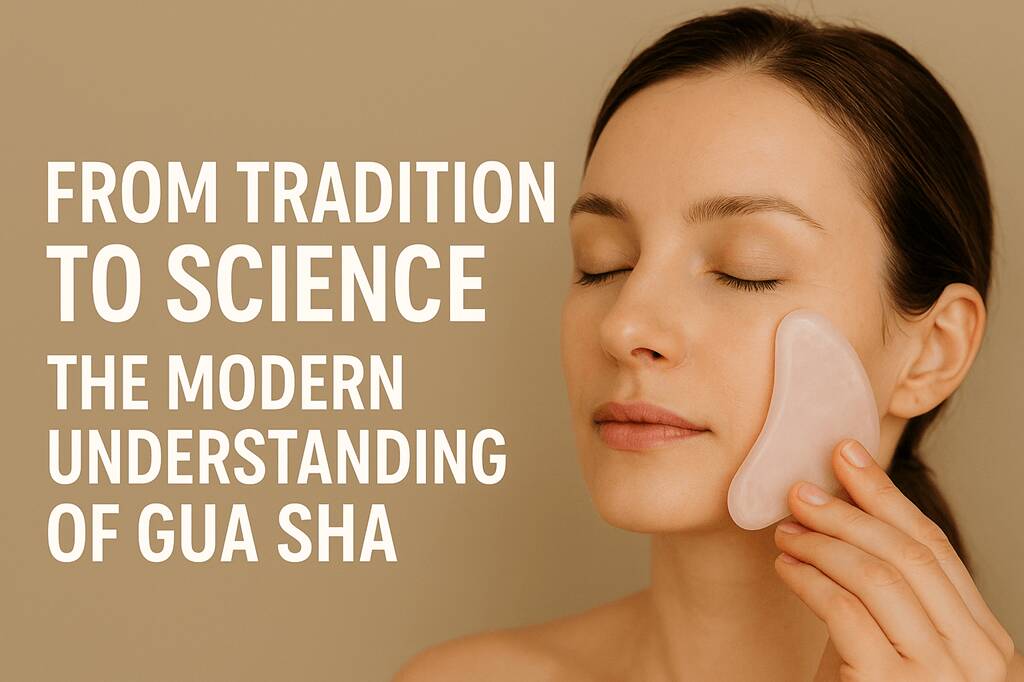
Gua Sha originated thousands of years ago as a folk therapy in Traditional Chinese Medicine (TCM). The term literally means “to scrape away stagnation,” referring to the method of using a smooth-edged tool—often made of jade, horn, or stone—to massage the skin and promote the flow of qi and blood.
In TCM theory, stagnation of qi is the root of many ailments, from muscle tension to fatigue. Gua Sha was traditionally used to “release” this stagnation, helping the body’s self-healing process. It was a simple but powerful method practiced within families and passed down through generations.
1. The Rise of Gua Sha in Modern Wellness
Fast forward to the 21st century, and Gua Sha has made a dramatic comeback. On social media, influencers and dermatologists showcase facial Gua Sha techniques that claim to sculpt, lift, and rejuvenate the skin. Hashtags like #guasha and #jaderoller have gained millions of views, turning an ancient ritual into a beauty trend.
Modern Gua Sha is no longer limited to health clinics—it’s now a part of daily skincare. The appeal lies in its simplicity: no electricity, no chemicals, just the gentle glide of a tool that promotes relaxation and mindfulness.
2. The Science Behind the Scrape
While traditional Gua Sha relies on energy flow theory, modern research is uncovering measurable biological effects. Studies have shown that Gua Sha can:
Increase microcirculation and blood flow to the treated area
Trigger the release of anti-inflammatory cytokines, reducing muscle soreness
Stimulate the immune system and enhance tissue repair
A 2011 study published in Pain Medicine found that Gua Sha improved symptoms of chronic neck pain by enhancing circulation and metabolic recovery. Researchers believe the mild mechanical stress stimulates healing responses in soft tissues—aligning traditional beliefs with biomedical understanding.
3. Gua Sha in Professional Healthcare
Beyond beauty routines, Gua Sha has entered clinical settings as a complementary therapy. Physiotherapists and sports recovery experts use stainless steel “instrument-assisted soft tissue mobilization” (IASTM)—essentially a modernized version of Gua Sha—to treat muscle stiffness and fascia restrictions.
In hospitals in China, Gua Sha is also used as an adjunct treatment for fever, respiratory issues, and post-stroke rehabilitation, always under trained practitioners’ supervision.
4. The Future of Gua Sha: Integration and Innovation
The next chapter of Gua Sha lies in integration. Emerging products combine traditional craftsmanship with modern materials and even smart technology—like temperature-controlled or vibration-enhanced tools. At the same time, wellness brands are embracing eco-friendly materials and ethical sourcing, aligning with global sustainability trends.
Scientific validation continues to strengthen its legitimacy, turning Gua Sha from “folk remedy” into a recognized therapeutic technique. As data meets tradition, the practice finds new credibility and purpose in modern life.
5. Conclusion: Harmony Between Heritage and Science
Gua Sha’s enduring power lies in its dual identity—both ancient and modern, intuitive and evidence-based. Whether you use it for glowing skin or muscle relief, the ritual connects you to a deeper sense of balance and awareness.
It’s not merely about scraping the surface—it’s about reviving a timeless connection between the body, mind, and nature.

